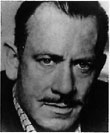


John Steinbeck was born on February 27, 1902 in Salinas, California. His father, John Steinbeck, Sr., served as the county Treasurer and his mother, Olive Steinbeck, was a former schoolteacher. John’s parents fostered his love for words by reading to him from popular and classical literature every night after dinner. On his ninth birthday Steinbeck was given a copy of Malroy’s Morte d’Arthur, a book of Arthurian tales, the first book he ever owned. The Arthurian influence became apparent in many of his writings, most notably Tortilla Flat. After graduating from high school in 1919, John went on to study at Stanford University. He was originally an English major, but after five years of studying, he left the school without graduating in order to pursue a writing career in New York. Steinbeck returned to California after he was unsuccessful in getting any of his writing published. Throughout high school and college, Steinbeck took summer jobs working as a ranch hand. These jobs were extremely important to his literary career. Memories of his work on ranches would furnish the background for Of Mice and Men, published in 1937, and other novels he wrote about ranch life. Of his twenty-eight books, twelve of them are set between the Pacific Ocean and the Sierra Nevada Mountains, an area encompassing the Salinas Valley, where Steinbeck grew up.
While he was at Stanford, John met E.C.A. Smith, a successful writer. She saw a bright future for John and sacrificed much of her time to help John with his writing. E.C.A. Smith eventually introduced John to her literary agents, McIntosh and Otis.
Steinbeck’s first novel, Cup of Gold was published in 1929, but it attracted little attention. His two subsequent novels, The Pastures of Heaven and To a God Unknown were also poorly received by the literary world. John married Carol Henning in 1930. Carol and John were happy together, except that they were always running short on money. They lived off the money sent to them by John’s parents. When funds ran very low, John was forced to take a break from his writing and find a job.
Steinbeck had chosen one of the toughest times to start his literary career – in the Great Depression period of the early thirties; but nevertheless, he was able to succeed. Tortilla Flat, published in 1935, marked the turning point in Steinbeck’s literary career. This book received the California Commonwealth Club’s gold metal for best novel by a California author, and it was incredibly successful commercially. Of Mice and Men was published in 1936, and The Grapes of Wrath, which won the Pulitzer Prize, was published in 1939. Steinbeck received much publicity, which he hated. He and Carol moved to a ranch in Los Gatos, hoping to hide from intrusions into their privacy. However, Steinbeck was unable to stay hidden, and in a letter to his friend he said, “I got home about three days ago for a little while and found abut five hundred letters that had to be answered. So I have been answering them as quickly as possible”.
Steinbeck married his second wife, Gwyndolyn Conger, in 1943. John had two sons with Gwyn, Thom, who was born in 1944, and John IV, who was born in 1946. In 1950, John married his third wife, Elaine Scott. Throughout this time, he continued to write and continued to be successful. After 1950, he produced five novels, two books of nonfiction, a musical comedy, and newspaper and magazine articles. He wrote speeches for Lyndon Johnson and he did some work for the United Nations. The climax of his years as a writer came on December 10, 1962, in Stockholm, Sweden, when he received the Nobel Prize for Literature. He was only the sixth American to win the award.
Late in 1968, Steinbeck was hospitalized with a heart condition. After much begging, Steinbeck convinced his doctors to release him and send him home. On December 20, 1968, Steinbeck died peacefully in bed in his New York apartment.
Source: John Steinbeck: The Errant Knight by Nelson Valjean, Chronicle Books/San Francisco, 1975Picture Source: National Steinbeck Center